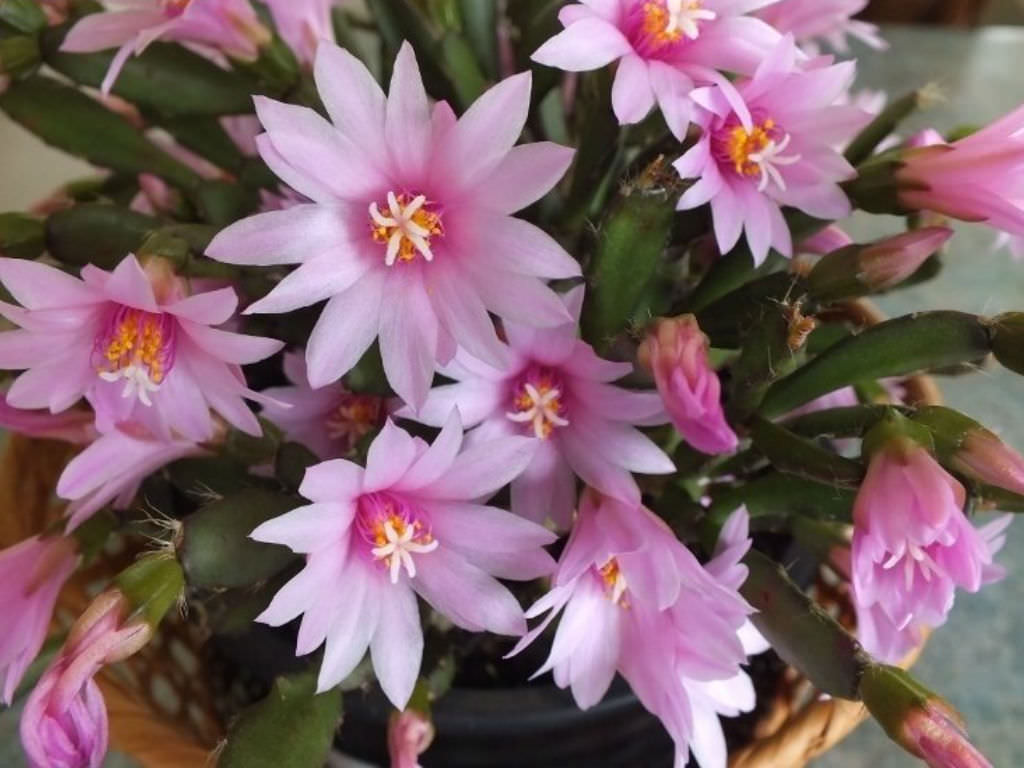|
||||||
Free Rhipsalidopsis Rosea Plants When its flowers open fully, the Rhipsalidopsis provides a spectacular display of colour, which is particularly enhanced by the open spreading habit. When young it can be effectively grown as a pot plant, but as it grows it is better suited to a hanging pot or basket, where the cascading foliage and flowers may be viewed to greater benefit. As buds and flowers are produced, great care should be exercised to avoid any fluctuations of temperature, moisture and light, as any of these may result in the sudden loss of the flower buds. Where plants are grown in a position with light from one side, they should be regularly turned to keep the growth in balance and to encourage even production of flowers. Plant type : Flowering cactus with upright, bushy, semi-trailing habit Season of interest : Spring Size : 15-30cm (6—12in) Flower : Star shaped, 2.5cm (1 in), rosy-pink Leaf : Flat or angled leaf-like pads 2cm (fin), green, with fine bristles, produced in spring Temperature : 10-28°C (50—82°F) Aspect/Light :Reasonably well-lit situation, but with some light shade Humidity : Moderate to high Watering : Just moisten compost in summer, autumn and winter, allowing to dry a little before re-watering; provide more water in spring during flowering period; after flowering, keep on the dry side for a few weeks Feeding : Once every two to three weeks with half strength flowering plant fertilizer from production of flower buds to end of flowering Propagation : Remove one or two pads and pot in cactus and succulent compost at 20-22°C (68—72°F) in spring or summer Potting : Cactus and succulent compost or houseplant potting compost Problems : Mealy bug Availability : Commonly available in spring Uses indoors : Feature plant for lounge, dining room or kitchen; suitable for hanging basket |
||||||
|
||||||
